
Arm Hand & Fist
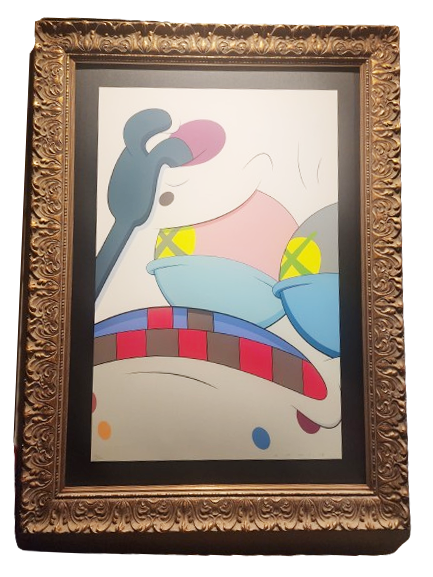
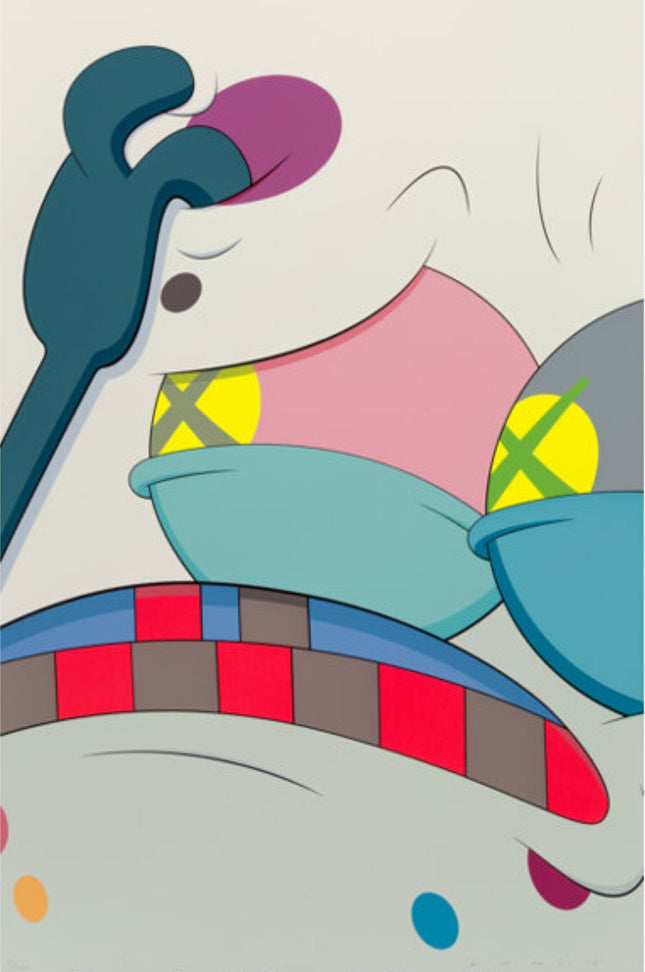
Kaws- Brian Donnelly Untitled from Blame Game- #10 Hand on Brow Silkscreen Print by Kaws- Brian Donnelly
Untitled from Blame Game- #10 Hand on Brow Hand-Pulled 11-Color Silkscreen Print on Saunders Waterford Hi-White Paper by Artist Kaws- Brian Donnelly Street Art Limited Edition Artwork. 2014 Signed & Numbered Limited Edition of 100 Artwork Size 23x35 Framed With a Large Custom Frame and Mat, Slight Feather Scuff To Lower Middle White. KAWS (b. 1974) Untitled from Blame Game, 2014 Screenprint in colors on Saunders Waterford Hi-White paper 35 x 23 inches (88.9 x 58.4 cm) (sheet) Ed. 100 Signed, numbered, and dated in pencil along the lower edge. Published by Pace Prints, New York The Expressive Nuance of KAWS' "Untitled from Blame Game - #10 Hand on Brow" The "Untitled from Blame Game - #10 Hand on Brow" stands as a significant piece within the oeuvre of KAWS, the artistic alias of Brian Donnelly. This piece is part of a limited series, a hand-pulled 11-color silkscreen print on Saunders Waterford Hi-White paper, known for its exceptional quality and resilience. The artwork, measuring 35 x 23 inches, is one of a limited edition set of 100, each signed, numbered, and dated by the artist in pencil along the lower edge, showcasing his direct involvement and personal touch in each piece. Released in 2014 and published by Pace Prints in New York, this work is framed within a large custom frame and mat, which elegantly encases the artwork and enhances its display. The "Hand on Brow" motif featured in print indicates KAWS' unique and recognizable visual language, frequently including bold colors, graphic shapes, and the reimagined characters that have become central to his art. The slight feather scuff to the lower middle white of the print may suggest the hands-on process involved in creating these works, emphasizing their handmade nature and the authenticity of the screen printing process. KAWS: Bridging Street Art and the Fine Art Sphere KAWS' journey from a graffiti artist tagging the streets of Jersey City to a global art phenomenon encapsulates the transformative power of street pop art and its ability to permeate the fine art world. His background in graffiti is evident in the freeform and expressive quality of his work, yet there is a sophistication to his approach that aligns with delicate art sensibilities. His "Untitled from Blame Game - #10 Hand on Brow" vividly represents this crossover, presenting a visual dialogue that is accessible yet complex, playful yet profound. Using an 11-color palette in the silkscreen process is particularly noteworthy, allowing KAWS to layer colors with precision and create images with depth and vibrancy. The choice of Saunders Waterford Hi-White paper reflects his commitment to quality, as it is a preferred substrate for fine art prints due to its superior texture and durability. Like many in KAWS' body of work, this piece is a sophisticated confluence of street art's edginess and pop art's mass appeal. Cultural Resonance of KAWS' Limited Edition Prints KAWS' prints, especially those within the "Blame Game" series, resonate culturally due to their commentary on social constructs and individual experience. The recurring themes in his work, including isolation, companionship, and contemplation, are universally relevant, allowing his art to speak to a diverse audience. His "Untitled from Blame Game - #10 Hand on Brow" encapsulates these themes, employing his iconic crossed-out eyes and abstracted figures to invite introspection and emotional response. As a limited edition piece, this artwork occupies a special place in street pop and graffiti art narratives. Collectors and enthusiasts value KAWS' prints for their artistic merit, rarity, and investment potential. The art of KAWS, particularly pieces like "Untitled from Blame Game - #10 Hand on Brow," continues to influence the trajectory of street-inspired art, commanding attention in urban environments and refined gallery spaces. In conclusion, "Untitled from Blame Game - #10 Hand on Brow" is a testament to KAWS' masterful blend of street art's spontaneity with the calculated craft of fine art printmaking. This piece symbolizes the artist's capacity to engage with viewers on multiple levels, offering a visual feast that is as thought-provoking as aesthetically pleasing. As street pop art continues to evolve, the work of KAWS is a pivotal point of reference, blurring the lines between subcultures and mainstream art forms.
$33,611.00
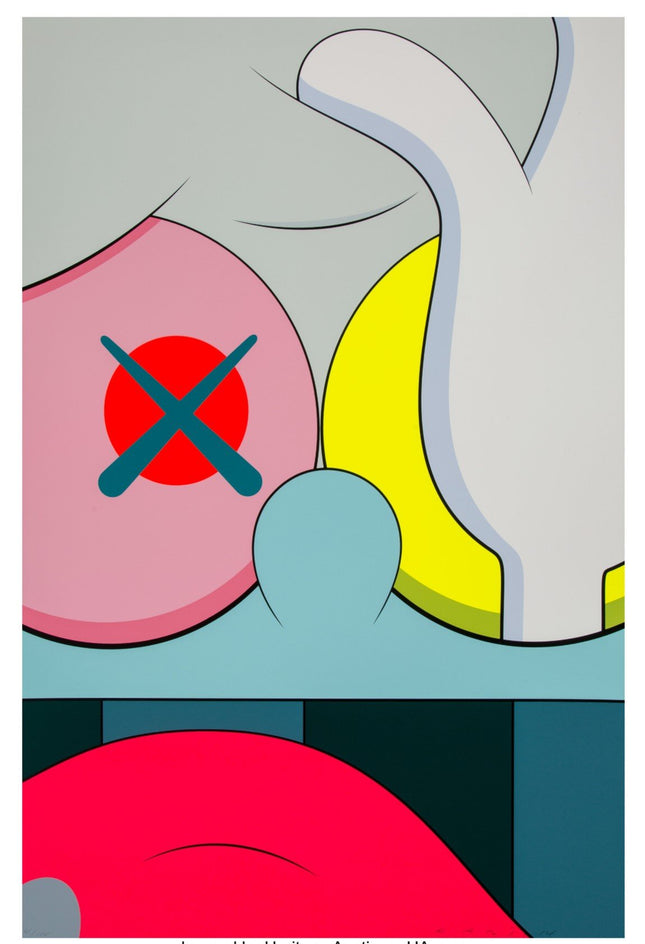
Kaws- Brian Donnelly Untitled from Blame Game #8 Hand on Eye Silkscreen Print by Kaws- Brian Donnelly
Untitled from Blame Game- #8 Hand on Eye Hand-Pulled 11-Color Silkscreen Print on Saunders Waterford Hi-White Paper by Artist Kaws- Brian Donnelly Street Art Limited Edition Artwork. 2014 Signed & Numbered Limited Edition of 100 Artwork Size 23x35 Framed With Large Custom Frame & Mat. KAWS (b. 1974) Untitled from Blame Game, 2014 Screenprint in colors on Saunders Waterford Hi-White paper 35 x 23 inches (88.9 x 58.4 cm) (sheet) Ed. 100 Signed, numbered, and dated in pencil along the lower edge and published by Pace Prints, New York. KAWS' "Untitled from Blame Game - #8 Hand on Eye": A Symbol in Street Pop Art In the diverse and vibrant world of street pop art, KAWS, the artistic moniker of Brian Donnelly, is a name that resonates with innovation and cultural relevance. His "Untitled from Blame Game - #8 Hand on Eye" is a prime example of his artistry, which merges the realms of graffiti, pop art, and commercial imagery. This piece is a hand-pulled 11-color silkscreen print on Saunders Waterford Hi-White paper and part of a limited edition series released in 2014. Each print from this series is part of an exclusive collection, limited to 100 signed and numbered editions, making it a coveted piece for collectors and enthusiasts alike. The artwork's dimensions, 35 x 23 inches, allow for an immersive viewing experience, with the enormous custom frame and mat serving to accentuate its bold visual impact further. KAWS' signature style is evident in the interplay of colors and the iconic imagery that has become synonymous with his name — particularly the crossed-out eyes, which have become a powerful symbol within the lexicon of contemporary art. This imagery is not just a hallmark of his design but speaks to a more profound commentary on society, identity, and emotional experience. Technique and Cultural Commentary in KAWS' Art The technical proficiency of KAWS is on full display in "Untitled from Blame Game - #8 Hand on Eye," where the precision of the silkscreen process highlights his meticulous attention to detail. The 11-color format reveals a complex layering that adds depth to the image, with each hue selected to contribute to the overall narrative of the piece. The use of Saunders Waterford Hi-White paper is a deliberate choice that ensures the colors' vibrancy and the print's longevity, considerations that reflect the artist's dedication to his craft. More than just visually striking, KAWS' works often convey significant cultural commentary. The recurring themes in his pieces often reflect contemporary life's saturation with media and imagery, offering a critique of how we consume and interact with visual stimuli. His works bridge the gap between high art and popular culture, making bold statements that resonate with a broad audience and ensuring his place as a pivotal figure in the evolution of street pop art. KAWS: Influencing the Trajectory of Street Art and Beyond KAWS' contributions to the art world extend beyond his prints and paintings. His influence permeates various sectors, from mainstream commercial collaborations to high-end fashion and design, challenging traditional boundaries and expanding the scope of street art. The "Untitled from Blame Game" series, specifically "#8 Hand on Eye," exemplifies this crossover, merging street art's aesthetic with fine art's finesse. By signing, numbering, and dating each print along the lower edge, KAWS personalizes each edition published by Pace Prints, New York. This personal touch, combined with the limited availability, adds to the allure and value of the artwork. These elements have solidified KAWS' position in the art world and made his works highly sought after in the market. KAWS's "Untitled from Blame Game - #8 Hand on Eye" is a testament to the artist's ability to elevate street pop art to a form that transcends traditional graffiti artwork. Its production, presentation, and profound cultural resonance underscore KAWS's artistry's transformative power. As street art continues to evolve and influence contemporary culture, KAWS' works, such as this piece, will remain integral in shaping the narrative and appreciation of this dynamic art form.
$33,611.00
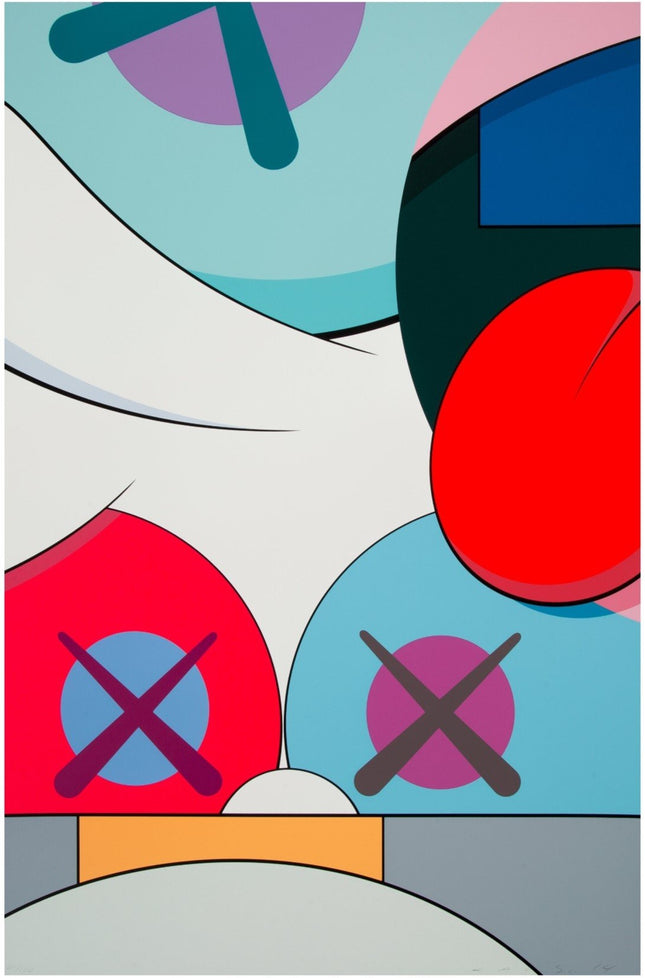
Kaws- Brian Donnelly Untitled from Blame Game #3 Upside Down Face Silkscreen Print by Kaws- Brian Donnelly
Untitled from Blame Game- #3 Upside Down Face Hand-Pulled 11-Color Silkscreen Print on Saunders Waterford Hi-White Paper by Artist Kaws- Brian Donnelly Street Art Limited Edition Artwork. 2014 Signed & Numbered Limited Edition of 100 Artwork Size 23x35 Framed With Large Custom Frame & Mat. KAWS (b. 1974) Untitled from Blame Game, 2014 Screenprint in colors on Saunders Waterford Hi-White paper 35 x 23 inches (88.9 x 58.4 cm) (sheet) Ed. 100 Signed, numbered, and dated in pencil along the lower edge. Published by Pace Prints, New York Unveiling KAWS' "Untitled from Blame Game - #3 Upside Down Face" In the dynamic intersection of street pop art and graffiti artwork, few names are as resonant as that of KAWS, the pseudonym of American artist Brian Donnelly. Born in 1974, KAWS has become an icon of contemporary art, bridging the worlds of art and mainstream culture. His piece, "Untitled from Blame Game - #3 Upside Down Face," is a compelling demonstration of his prowess in the art form. Created in 2014, this artwork is part of a limited edition of 100 hand-pulled 11-color silkscreen prints on Saunders Waterford Hi-White paper, each bearing the artist's signature, number, and date along the lower edge. Published by Pace Prints, New York, this piece exemplifies the seamless blend of commercial and fine art that KAWS is renowned for. The artwork is a bold expression of KAWS' unique aesthetic, featuring a signature character with an 'X' for each eye, a motif he has become famous for. This print, which is 35 x 23 inches, is framed with a large custom frame and mat, enhancing its visual impact. The 11-color silkscreen printing technique is a testament to KAWS' dedication to craftsmanship and quality, ensuring that each print offers a rich, vibrant palette and meticulous detail. The choice of Saunders Waterford Hi-White paper, known for its high quality, contributes to the artwork's premium feel and longevity. KAWS and the Evolution of Street Pop Art KAWS' journey in the art world is marked by his transition from a graffiti artist in the streets of New York to a towering figure in the global art scene. His work is celebrated for its fluidity in moving between various subcultures, including street art, pop art, and commercial imagery. The "Untitled from Blame Game" series perfectly illustrates how KAWS has transformed street art sensibilities into something that can be appreciated both in the buzzing city alleyways and the hushed galleries of fine art. His characters, though simplistic in form, convey a deep resonance with the viewer, often embodying themes of humanity, vulnerability, and isolation. KAWS' ability to evoke such emotion while maintaining a playful, accessible aesthetic is a hallmark of his work. This duality has endeared him to diverse audiences, from street art lovers to high-brow collectors. The Cultural Significance of KAWS' Artwork Beyond its visual appeal, the work of KAWS is deeply embedded in the cultural zeitgeist. His art captures contemporary life's essence, reflecting its complexities and simplicities. "Untitled from Blame Game - #3 Upside Down Face," like much of his work, is imbued with introspection, challenging the viewer to look beyond the surface. His pieces' recurring themes of deconstruction and recontextualization invite a dialogue about the nature of identity and recognition in a saturated media environment. Moreover, KAWS' influence extends beyond the canvas, impacting the broader design, fashion, and commercial branding landscape. His collaborations with major brands have pushed the boundaries of what is considered art, making his vision accessible to a broader audience and redefining the concept of what street pop art can be. "Untitled from Blame Game - #3 Upside Down Face" is not just a testament to KAWS' technical skill and artistic vision but also a symbol of the evolving narrative of street pop art and graffiti artwork. As a limited edition piece, it holds a special place in the annals of contemporary art, representing a moment in time where the lines between high art and street culture are not just blurred but beautifully intertwined.
$33,611.00
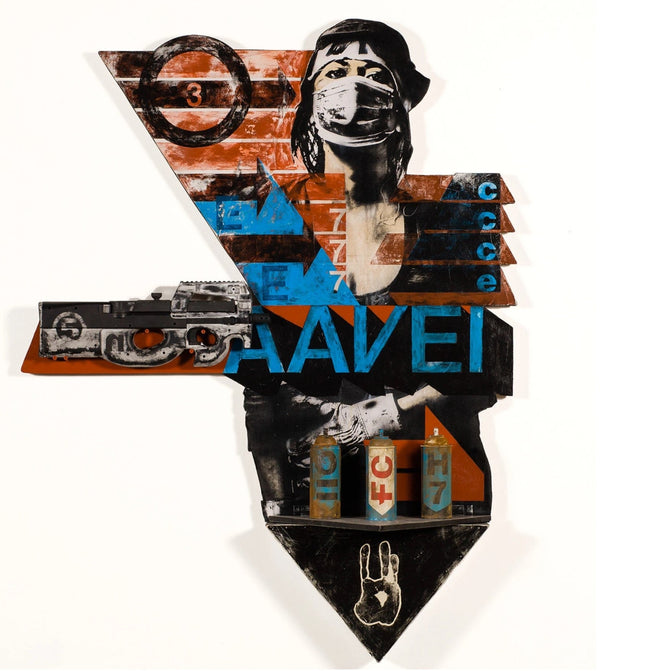
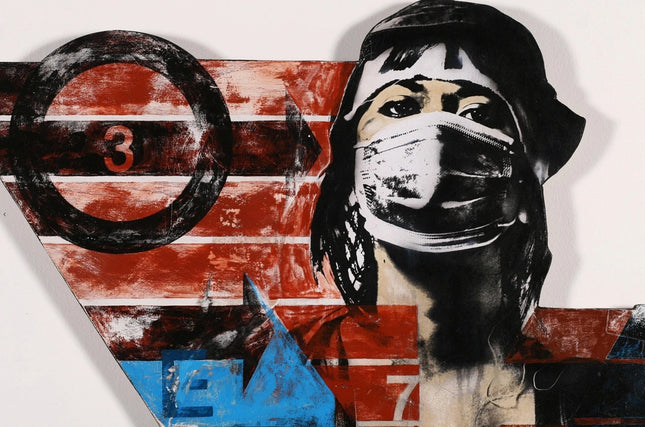
Eddie Colla AAVEI-2 Original Spray Paint Can Mixed Media Sculpture Painting by Eddie Colla
AAVEI-2 Original Mixed Media Spray Paint, Found Object Painting Sculpture Artwork by graffiti street artist modern pop artist Eddie Colla x D Young V. 2014 Signed by D Young V and Eddie Colla Original Mixed Media Spray Paint Acrylic Painting on Reclaimed Items & Wood Artwork Size 55x42 Large Mixed Media Painting on Wood With Reclaimed Toy Gun and 3x Vintage Spray Paint Cans. AAVEI-2 Collaboration with D Young V and Eddie Colla 55 x 42 x 15 inches Mixed Media on Wood, Spray Cans, Plastic Gun 2014
$6,271.00
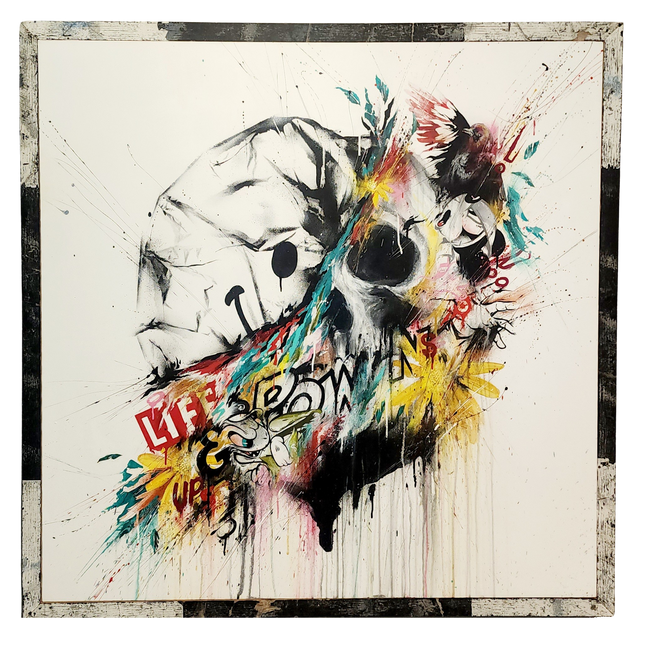
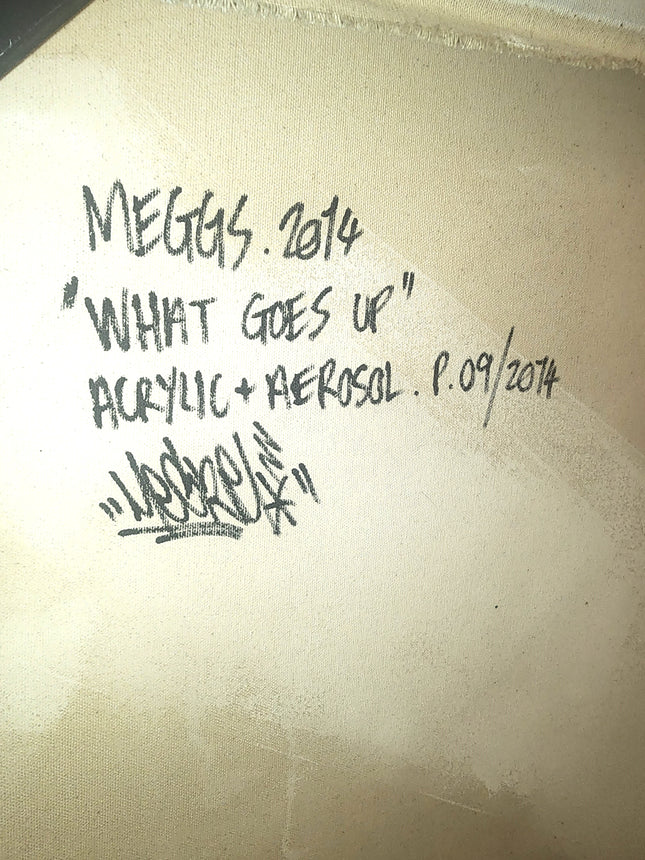
Meggs What Goes Up Original Spray Paint Acrylic Painting by Meggs
What Goes Up Original Spray Paint Acrylic Painting by Meggs One of a Kind Artwork on Canvas with Custom Reclaimed Wood Frame by Street Art Pop Artist. 2014 Signed Acrylic & Spray Paint Painting Original Canvas in Artist Hand Made Reclaimed Wood Frame Artwork Size 49x49. From Spoiled Rotten Show. Exploring the Dynamic Essence of Meggs' "What Goes Up" "What Goes Up" is an original acrylic and spray paint painting by the acclaimed street pop artist Meggs that encapsulates the dynamism and energy of his work. Created in 2014, this artwork reflects Meggs' signature style, which harmoniously blends street art's rawness with pop art's vividness. This one-of-a-kind artwork is a statement piece and a storytelling canvas that explores themes prevalent in Meggs' oeuvre, such as the constant struggle between opposing forces and the transient nature of success and failure. The painting measures 46x46 inches and is housed in a custom reclaimed wood frame handcrafted by the artist. Reclaimed wood adds an eco-conscious dimension to the artwork, reinforcing Meggs' interest in sustainability and the repurposing of materials. This choice of framing also accentuates the urban and gritty feel of the painting, resonating with the street art tradition of using found objects and spaces. Artistic Techniques and Visual Impact in "What Goes Up" Meggs employs acrylic and spray paint in "What Goes Up," showcasing his adeptness at using traditional and non-traditional media. The acrylic provides depth and texture, while the spray paint offers a sense of immediacy and spontaneity intrinsic to graffiti artwork. The painting is a cacophony of colors, bursting forth from a central point, suggesting an explosion of energy and creativity. The colors are not just randomly splashed across the canvas; they are meticulously layered to create a visual impact that is both chaotic and controlled. The artwork features a skull motif, a recurring element in Meggs' art, which often symbolizes the transient nature of human existence and the cyclical nature of life. However, in "What Goes Up," the skull is juxtaposed with vibrant colors and comic-style exclamations, which could be interpreted as a commentary on the superficiality of popular culture and the fleeting nature of fame and success. The skull seems to be disintegrating or exploding into an array of colors and shapes, a powerful visual metaphor for the inevitable downfall that follows a rise to the top. Cultural Commentary and the Essence of Street Pop Art The painting's title, "What Goes Up," hints at the adage "what goes up must come down," suggesting a narrative of ascent and descent. Meggs often infuses his Street Pop Art and graffiti Artwork with philosophical musings and critical observations of society. The work symbolizes the cyclical patterns of life and can be seen as a reflection of the transient nature of success or the hubris that often precedes a fall. The artist's use of text in the painting, rendered in a comic book style, adds a layer of communication with the viewer, inviting them to ponder the deeper meanings behind the vibrant facade. The piece is a testament to the artist's ability to navigate the space between gallery and street art, making it accessible to a diverse audience. The inclusivity of street art is evident in Meggs' work, where the public space becomes a canvas for dialogue, and the art becomes a part of the everyday urban landscape. "What Goes Up" is not just a visual spectacle but also a piece of cultural commentary, encapsulating the ethos of street art and its role in contemporary discourse. "What Goes Up" is a prime example of Meggs' impact on the field of street art and his contribution to the broader pop art movement. The painting manifests the artist's dedication to craft, concept, and commentary. Through the integration of various artistic techniques and the strategic use of reclaimed materials, Meggs has created an artwork that is both a visual feast and a conceptual powerhouse. The significance of Meggs' work lies in its ability to resonate with viewers on multiple levels. This work can be appreciated for its aesthetic qualities and ability to evoke emotion and provoke thought. As a piece of Street Pop Art and graffiti Artwork, "What Goes Up" embodies the spirit of this genre, which continues to push the boundaries of art and its place in society. It remains a poignant piece within Meggs' body of work and within the larger conversation of contemporary art.
$10,000.00
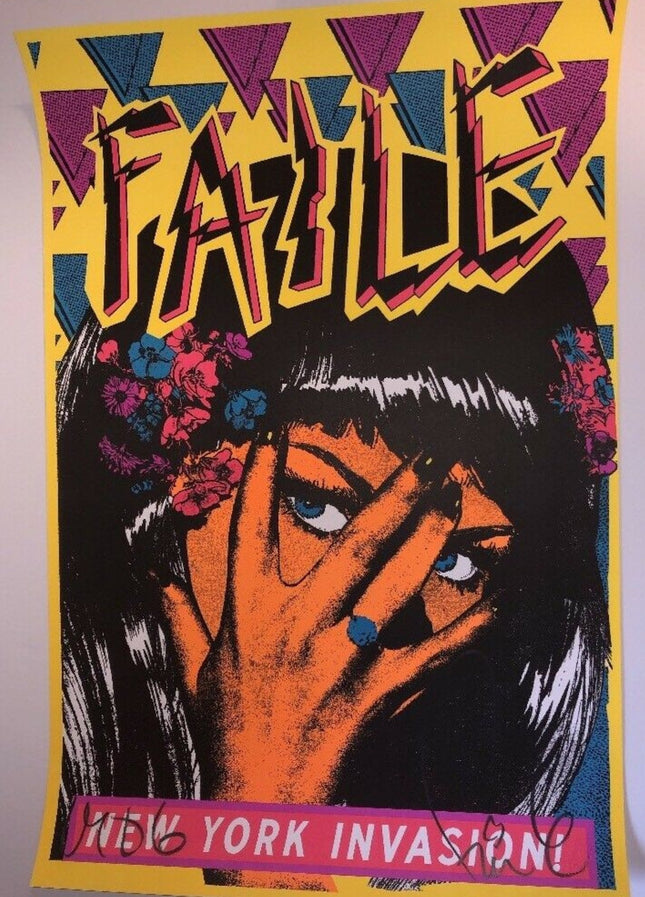
Faile New York Invasion Blacklight Silkscreen Print by Faile
New York Invasion Blacklight 6-Color Hand-Pulled Limited Edition Silkscreen Print on UV Fine Art Paper by Faile Rare Street Art Famous Pop Artwork Artist. Limited run of 200, blacklight variant artwork.
$4,802.00
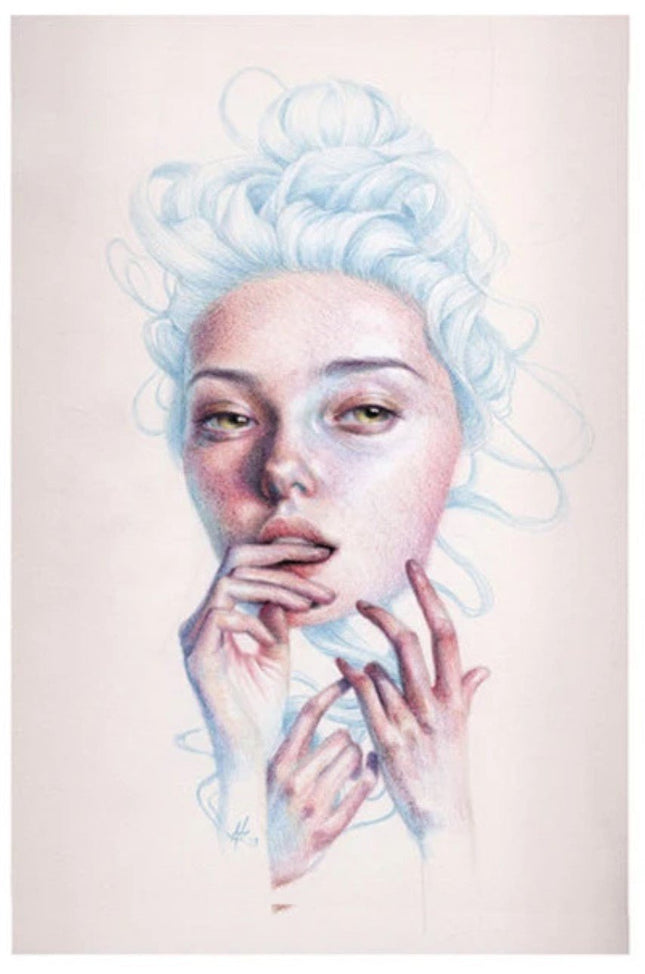
Mandy Tsung Tactile Feast Giclee Print by Mandy Tsung
Tactile Feast Artwork Giclee Limited Edition Print on Fine Art Paper by Pop Culture Graffiti Artist Mandy Tsung. 2014 Signed & Numbered Limited Edition of 25 Artwork Size 12z16
$129.00
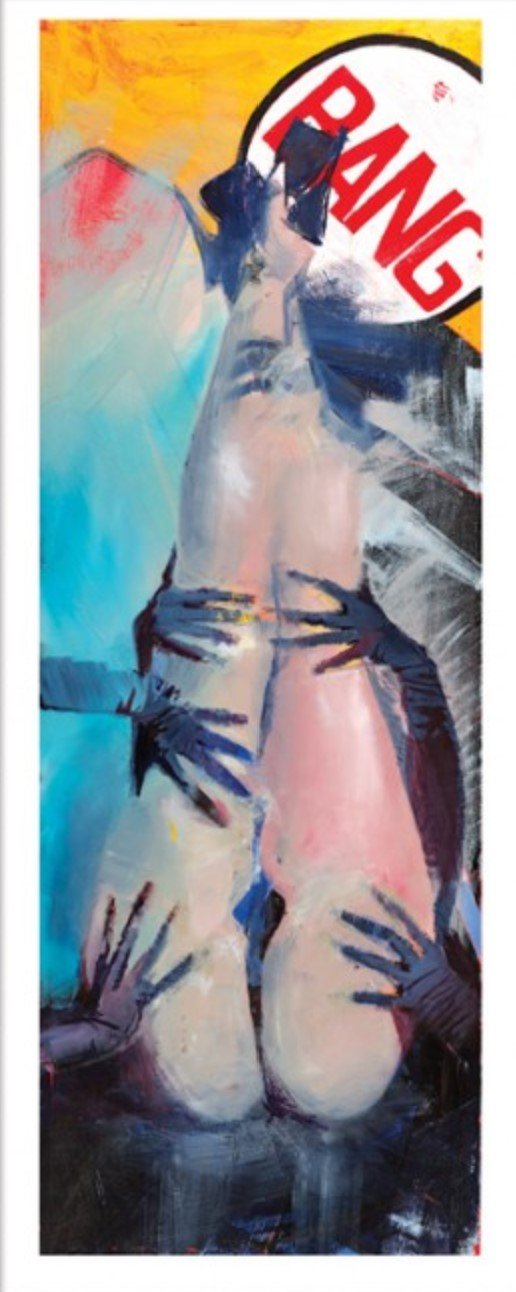
Camilo Pardo Bang Archival Print by Camilo Pardo
Bang Limited Edition Archival Pigment Prints on 310gsm Fine Art Paper by Camilo Pardo Graffiti Street Artist Modern Pop Art. The art that Camilo Pardo has created over the years is all over Detroit. A considerable amount of it is present on our freeways at any given moment of the day. Most recognized for his design work on the Ford GT, Camilo put verve in the steel curves and reminded us that a car's first internal combustion takes place in an artist's mind.
$406.00
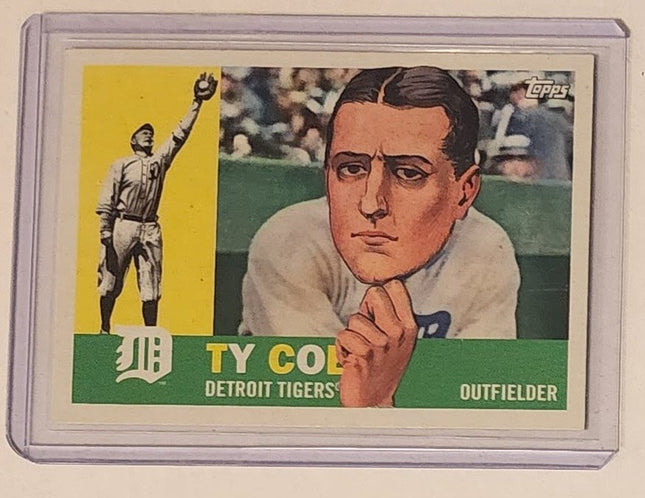
Pat Riot Ty Cobb Dapper Thinking Tigers Original Collage Baseball Card Art by Pat Riot
Ty Cobb/ Dapper Thinking- Tigers Unique Hand-Embellished Collage Mixed Media on Vintage Baseball Card by Pat Riot. 2014 Stamped Original Mixed Media Layered on Real MLB Topps Vintage Card With Pop Art Like: Ty Cobb/ Dapper Thinking- Tigers
$24.00
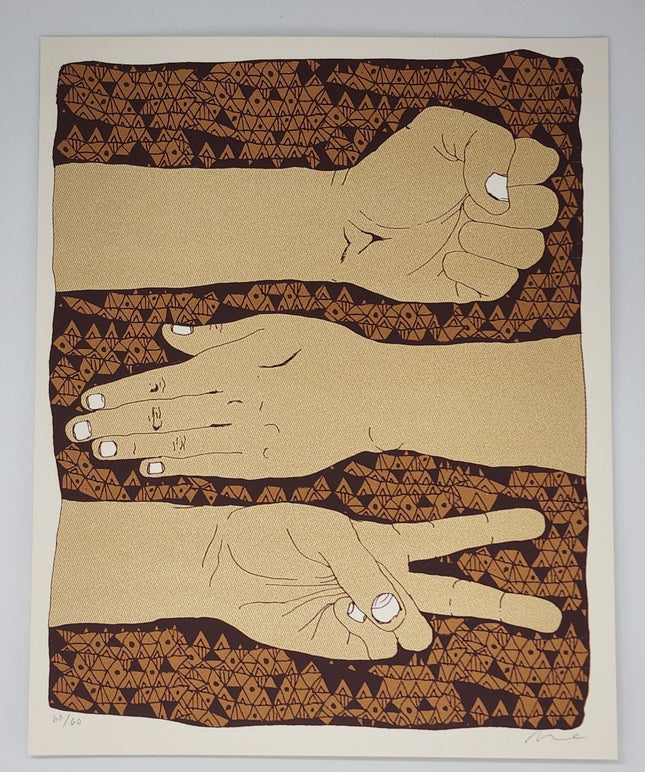
Nate Duval Rock Paper Scissors Silkscreen Print by Nate Duval
Rock Paper Scissors Hand-Pulled 3-Color Silkscreen Print on Fine Art Paper by Artist Nate Duval Limited Edition Pop Art Artwork. 2014 Signed & Numbered Limited Edition of 60 Artwork Size 8x10 Marked #60 of 60
$26.00
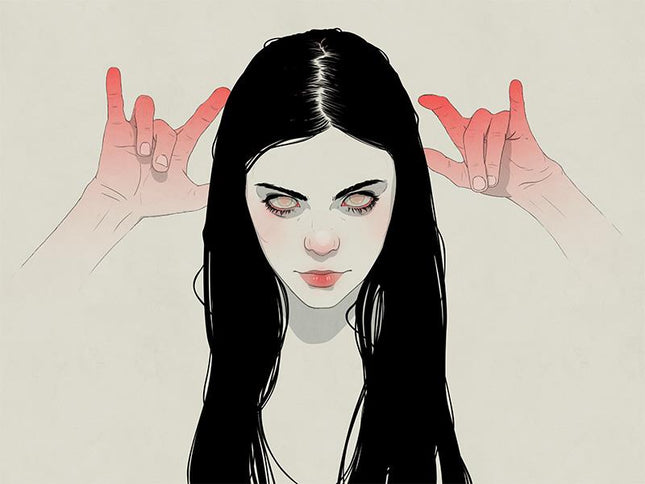
Jason Levesque Something Wicked Giclee Print by Jason Levesque
Something Wicked Artwork Giclee Limited Edition Print on Fine Art Paper by Pop Culture Graffiti Artist Jason Levesque. 2014 Signed & Numbered Limited Edition of 50 Artwork Size 16x12
$129.00
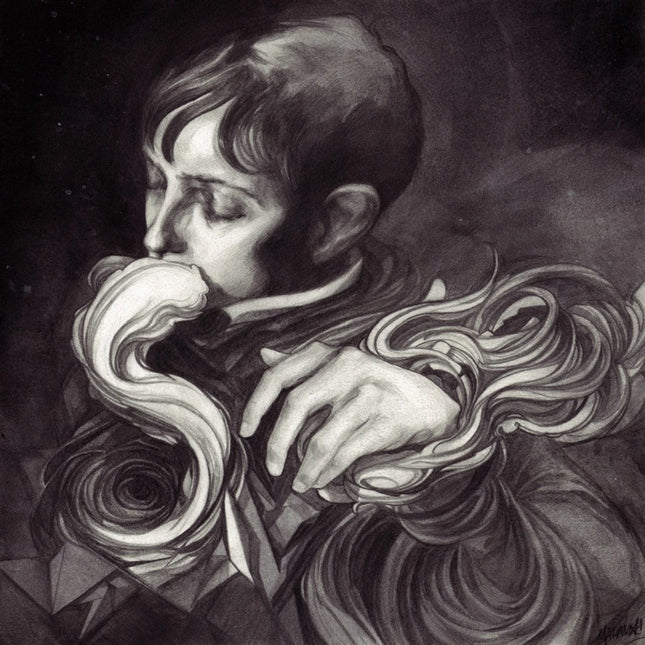
Nimit Malavia Forever | Never Giclee Print by Nimit Malavia
Forever | Never Artwork Giclee Limited Edition Print on Hahnemuhle Fine Art Rag Paper by Pop Culture Graffiti Artist Nimit Malavia. Nimit Malavia is a Canadian visual artist and illustrator known for his intricate and imaginative artworks. His style often combines delicate line work with a strong sense of narrative, drawing inspiration from various sources such as mythology, fairy tales, and contemporary culture. Malavia's work typically incorporates a mix of traditional and digital media, including ink, watercolor, and Photoshop.
$153.00
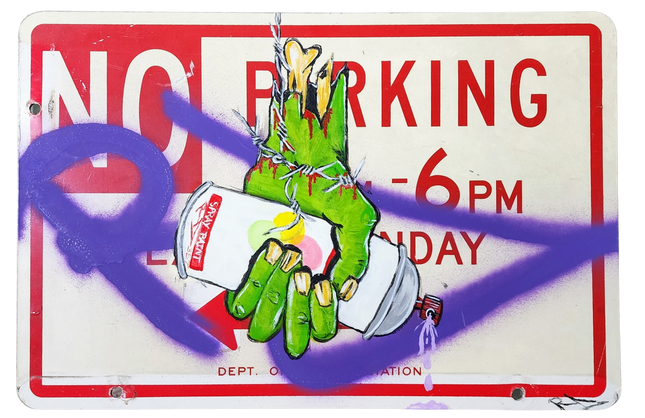
RD-357 Real Deal Zombie Hand Tag Original Street Sign Painting by RD-357 Real Deal
Zombie Hand Tag Original Street Sign Painting by RD-357 Real Deal Spray Paint Mixed Media One of a Kind of Artwork on New York City No Parking Notice Sign Pop Graffiti Street Art Artwork. 2014 Signed Spray Painting Original Artwork on Real NYC Reclaimed No Parking Metal Urban City Street Sign Size 18x12 of a Decapitated Zombie Hand Grasping & Spraying a Can of Krylon Spray Paint with the RD Tag in Purple. RD-357's Vivid Depiction of Urban Rebellion: The Zombie Hand Tag The 'Zombie Hand Tag' original street sign painting by RD-357, also known as Real Deal, is a provocative piece of street pop art and graffiti that embodies the rebellious spirit of urban street culture. Completed in 2014, this artwork uses a New York City 'No Parking' metal sign as its canvas, transforming a mundane object of urban regulation into a striking visual statement. The depiction of a decapitated zombie hand grasping and actively using a can of Krylon spray paint infuses the piece with a sense of post-apocalyptic creativity and survival. Interpreting the Symbolism in RD-357's Art This piece is rich with symbolism that resonates with the ethos of graffiti and street pop art. The zombie hand, often a symbol of horror and the macabre, is presented here as a vessel of artistic creation, subverting its usual connotations of death and decay. By wielding a can of Krylon, the hand breathes life into an art form that thrives on the fringes of society. The RD tag in purple spray paint marks the artist's signature and serves as an act of claiming territory, a fundamental aspect of graffiti culture. The choice of a 'No Parking' sign as the medium is deliberate and insightful. It represents the restrictions and boundaries imposed by society, which street art often aims to transgress. The act of a zombie hand, a symbol of defiance against mortality, spraying over such a sign is a metaphor for the resilience of street art. It refuses to be confined or controlled, much like the undead refusing to remain in the grave. The Aesthetics and Technique in RD-357's Zombie Hand Tag RD-357's technique in creating this piece highlights street art's raw and unapologetic beauty. The artwork, measuring 18x12 inches, showcases the artist's skill in manipulating spray paint, a medium often dismissed by the traditional art world but revered in street culture. The dripping paint from the Krylon can, the textured portrayal of the zombie flesh, and the striking contrast between the hand and the sterile sign it occupies all contribute to a composition that is as much a visual triumph as a statement piece. The use of mixed media, incorporating both the physical sign and the spray paint, reflects the layered nature of street art. It is both an object and a message, a tangible piece of the city's fabric and a commentary. The artwork challenges viewers to see beyond the surface to understand the depth and complexity of the messages conveyed through this unique artistic expression. Conclusion: The Cultural Impact of RD-357's Work The 'Zombie Hand Tag' is a potent example of how street pop art and graffiti can alter perceptions and engage with viewers on a visceral level. RD-357's work demonstrates street art's transformative power, which can turn a simple traffic sign into a thought-provoking piece that questions authority and celebrates the irrepressible nature of human creativity, even in the face of societal collapse. RD-357, whose real name and country of origin remain unknown, much like the enigmatic nature of street art itself, has created a piece that stands as a testament to the enduring spirit of street pop art and graffiti. The 'Zombie Hand Tag' is a visual spectacle and a narrative of resistance, a declaration that even in a world overrun by the metaphorical zombies of conformity and control, the artist's spirit remains unvanquished.
$600.00

















